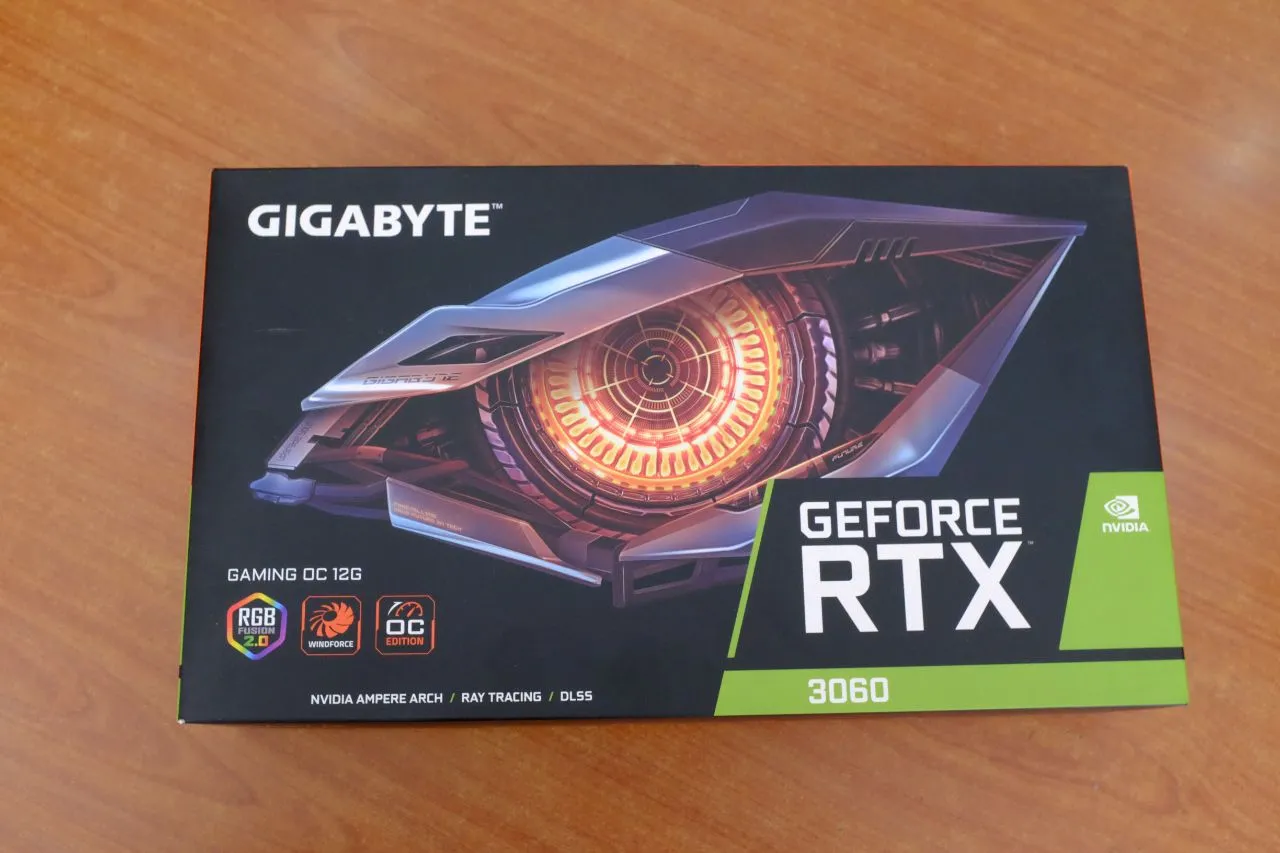
Gigabyte RTX 3060 Gaming OC 12G Review: A Mid-Range Powerhouse?
Contents
The highly anticipated GeForce RTX 30 series GPUs initially focused on the high-end market, leaving mid-range gamers eagerly awaiting more affordable options. After a four-month wait, the RTX 3060 Ti and subsequently the RTX 3060 finally arrived. In a market plagued by GPU scarcity, Gigabyte quickly released the Gigabyte RTX 3060 Gaming OC 12G, a mid-range contender based on the RTX 3060 GPU. This review takes a close look at this graphics card, examining its design, features, and potential performance.
 Gigabyte RTX 3060 Gaming OC 12G Packaging
Gigabyte RTX 3060 Gaming OC 12G Packaging
Design and Features: A Familiar Face
The Gigabyte RTX 3060 Gaming OC 12G bears a striking resemblance to its older sibling, the Gigabyte RTX 3060 Ti Gaming OC 8G. Both cards share the same updated Gaming OC box design, featuring the prominent “eye of the falcon” graphic. The rear of the box highlights key features such as the Windforce 3X cooling system, Screen-cooling technology, RGB Fusion 2.0 lighting, and a metal backplate.
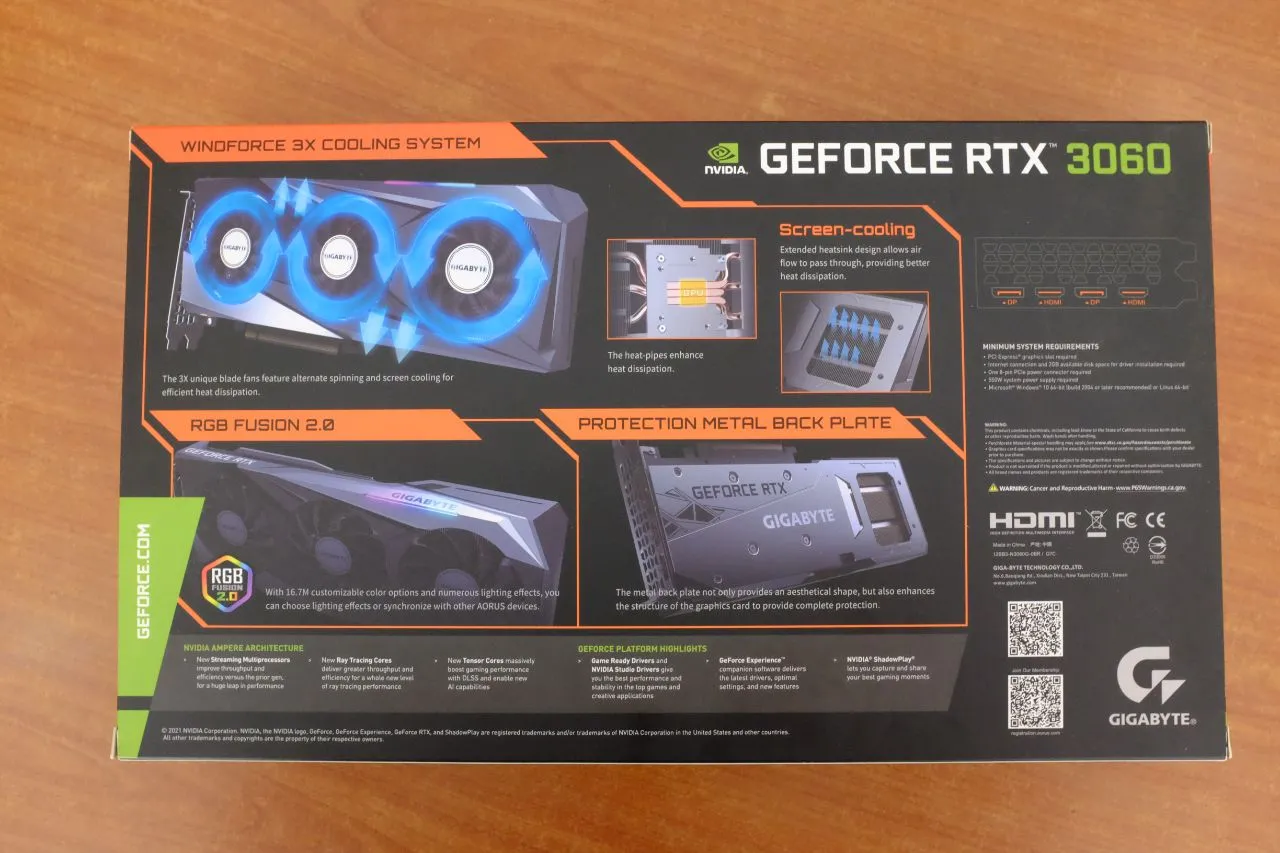 Gigabyte RTX 3060 Gaming OC 12G Rear Panel
Gigabyte RTX 3060 Gaming OC 12G Rear Panel
Unboxing reveals a card nearly identical in size and design to the 3060 Ti variant. While slightly smaller than high-end cards like the Gigabyte RTX 3080 Eagle Gaming OC 10G, it’s still a considerable length, potentially posing compatibility issues with smaller PC cases.
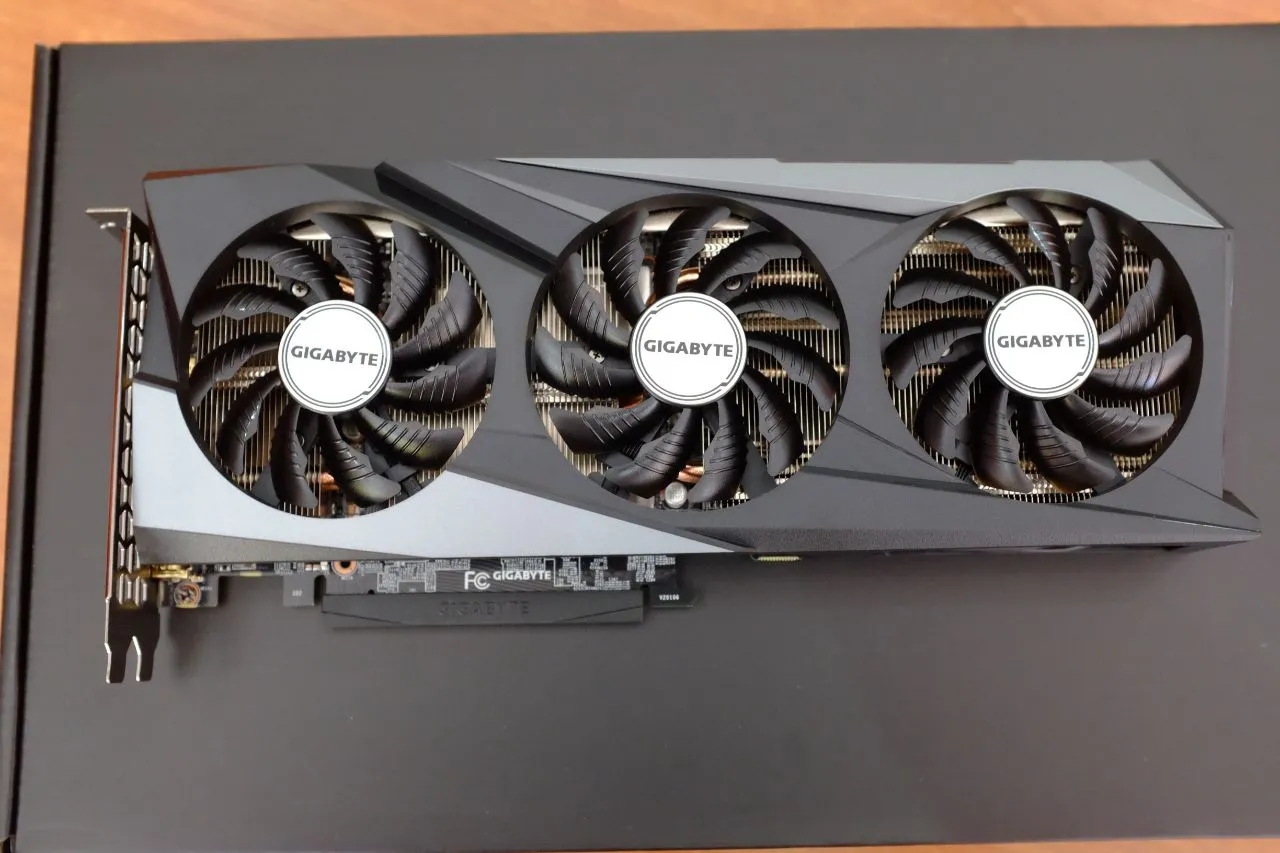 Gigabyte RTX 3060 Gaming OC 12G and 3060 Ti Comparison
Gigabyte RTX 3060 Gaming OC 12G and 3060 Ti Comparison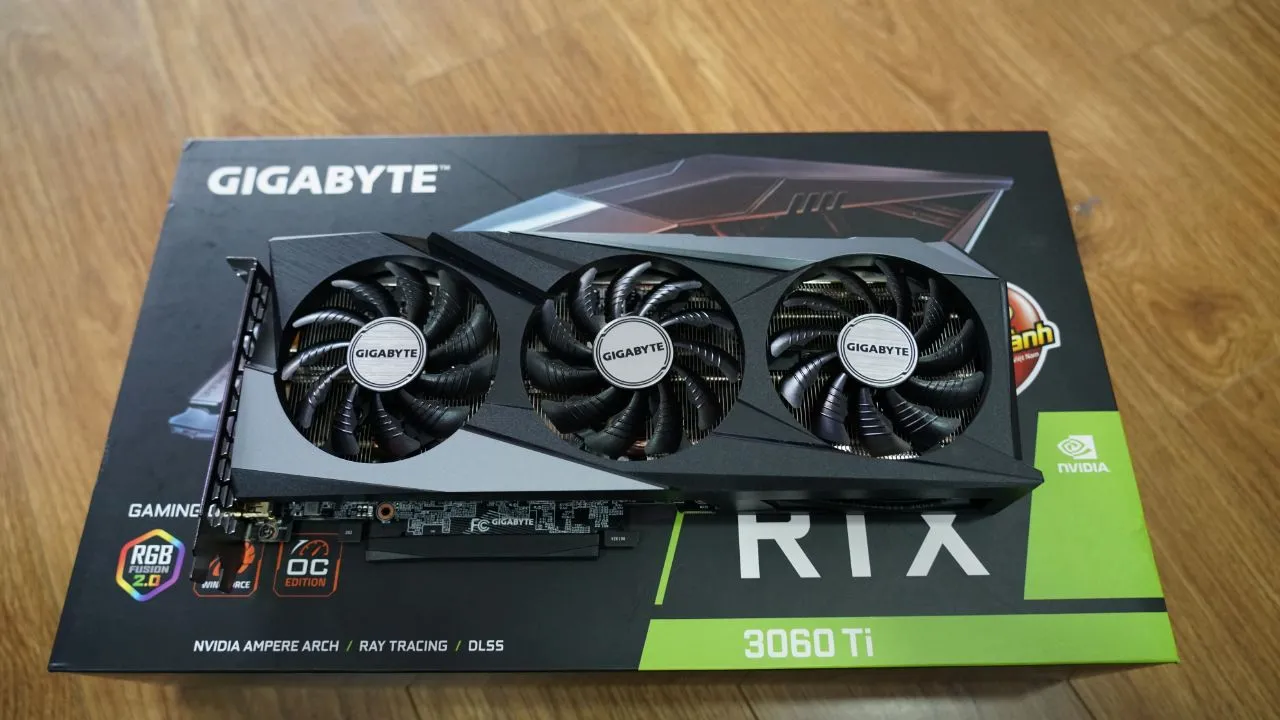 Gigabyte RTX 3060 Ti Gaming OC 8G
Gigabyte RTX 3060 Ti Gaming OC 8G
Although visually similar, the RTX 3060 Gaming OC 12G feels noticeably lighter than the 3060 Ti. This weight difference likely stems from Gigabyte’s decision to remove one heat pipe from the Windforce 3X cooler, a cost-saving measure befitting a mid-range card. While this reduction might impact cooling performance, the lower power consumption of the RTX 3060 GPU should mitigate any significant temperature increases.
Cooling and Power: Efficient Design
The Windforce 3X cooling solution employs three large fans with Gigabyte’s “Alternate Spinning” technology. This design aims to reduce turbulence and improve airflow, a technology previously implemented in higher-end AORUS graphics cards.
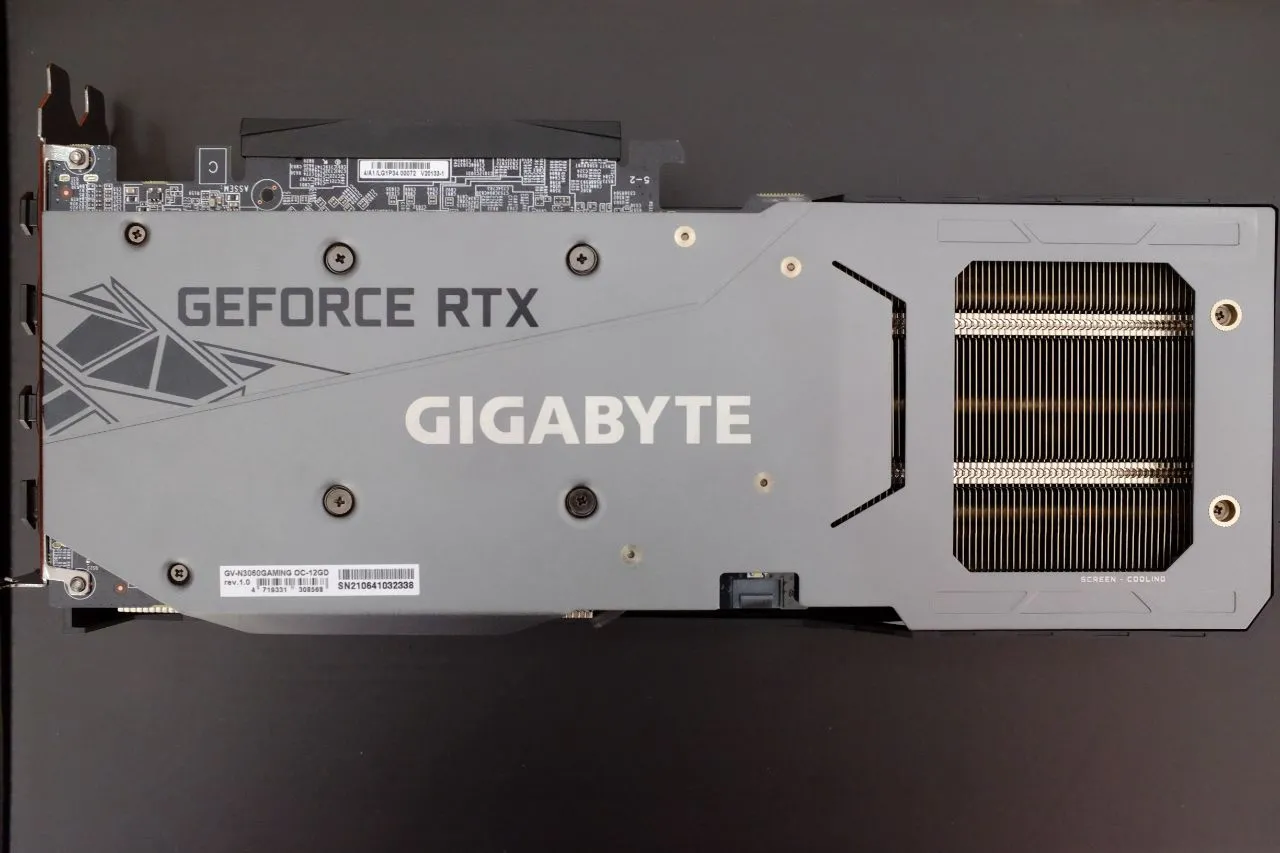 Gigabyte RTX 3060 Gaming OC 12G Cooling System
Gigabyte RTX 3060 Gaming OC 12G Cooling System
The metal backplate not only adds structural rigidity but also features a cutout for improved airflow, further enhancing cooling efficiency. The RGB lighting is located beneath the Gigabyte logo on the top edge of the card, consistent with recent Gaming OC models.
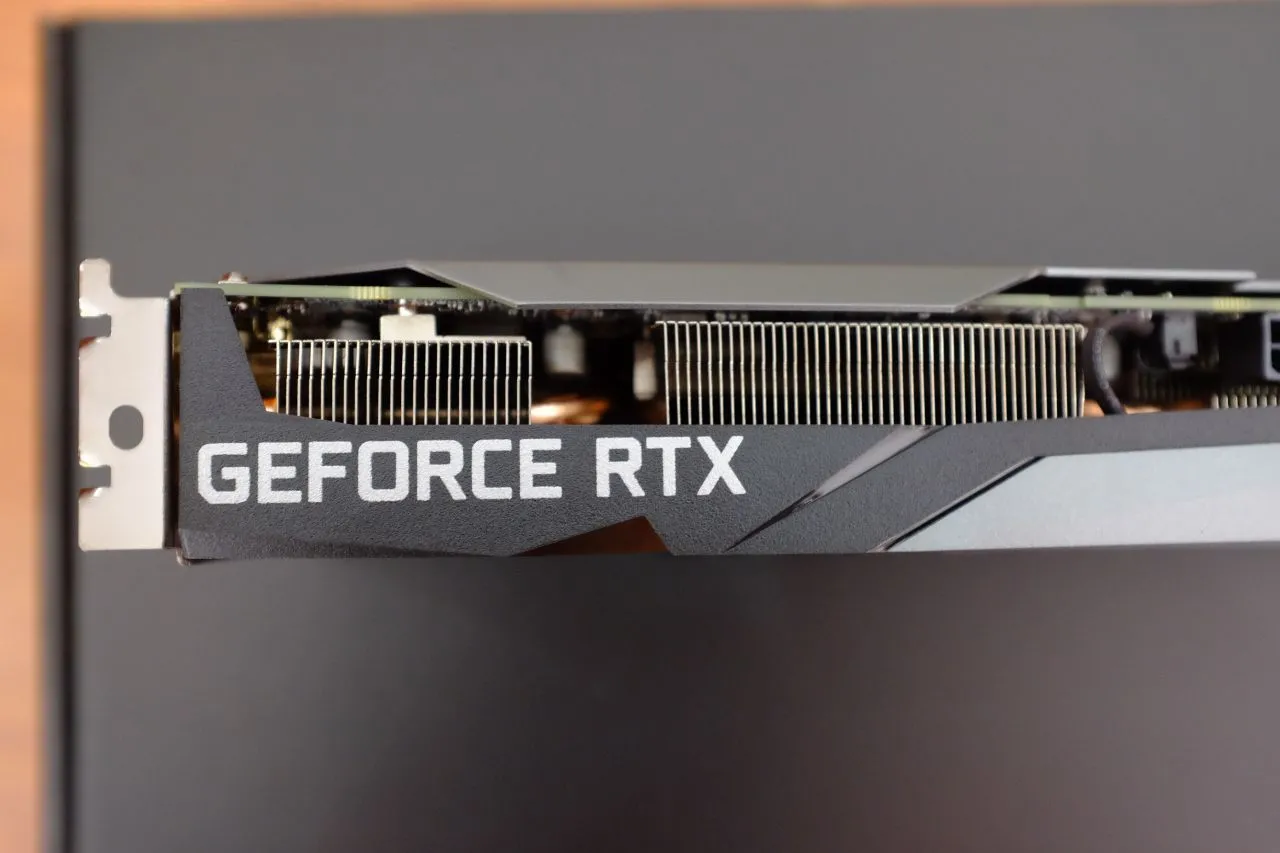 Gigabyte RTX 3060 Gaming OC 12G RGB Lighting
Gigabyte RTX 3060 Gaming OC 12G RGB Lighting
Like the RTX 3060 Ti, the 3060 Gaming OC 12G utilizes a single 8-pin power connector, positioned towards the center of the card. This placement, different from previous generations, accommodates NVIDIA’s Screen-cooling design on the reference PCBs. The single connector suggests a moderate power draw, making it suitable for mid-range systems.
Connectivity: Standard Ports
The Gigabyte RTX 3060 Gaming OC 12G offers standard connectivity options: two DisplayPort 1.4a ports and two HDMI 2.1 ports. Noticeably absent is the USB Type-C port with VirtualLink support found on previous Turing-based cards.
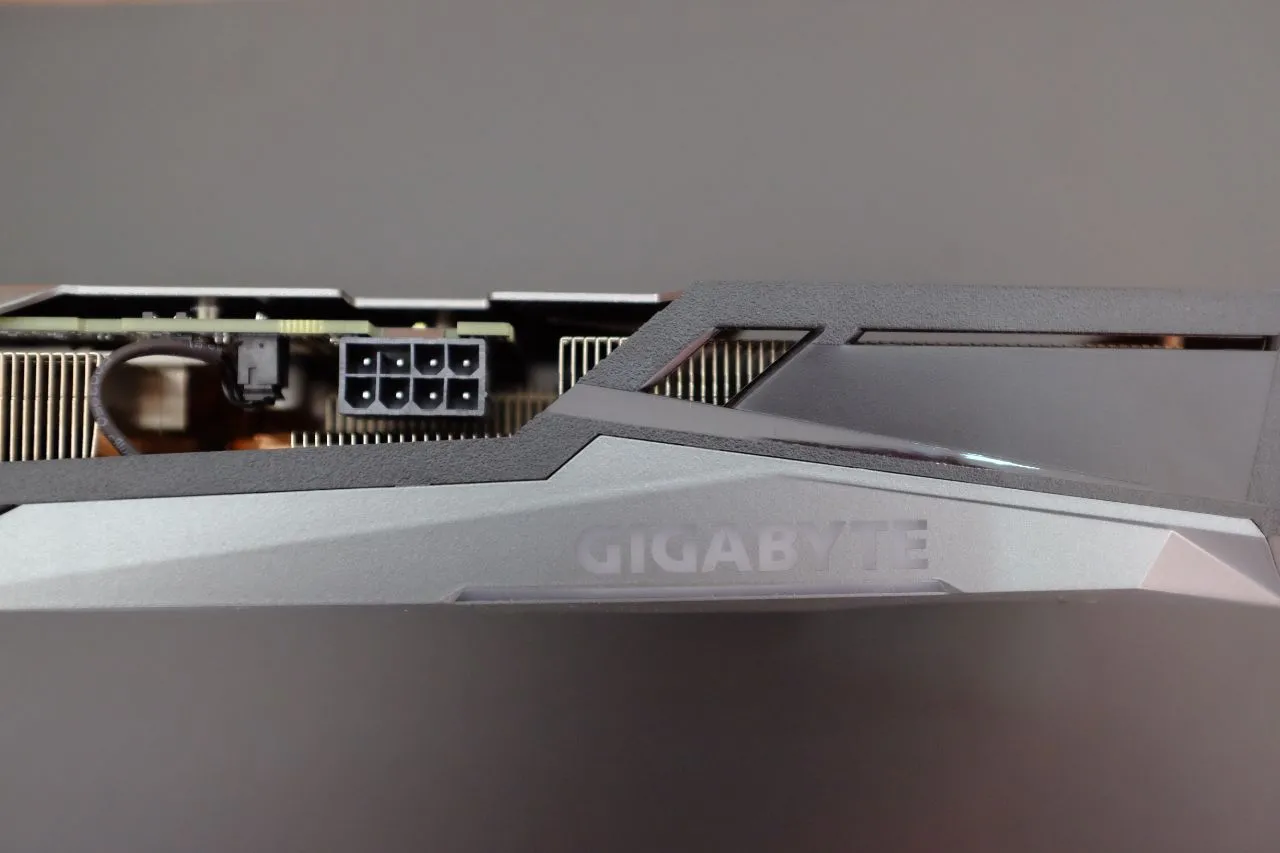 Gigabyte RTX 3060 Gaming OC 12G Ports
Gigabyte RTX 3060 Gaming OC 12G Ports
Conclusion: A Cost-Effective Choice
Gigabyte appears to have leveraged the existing design of the RTX 3060 Ti Gaming OC 8G to create the RTX 3060 Gaming OC 12G. This approach maximizes production efficiency and minimizes design costs, potentially translating to a more competitive price for consumers. While the visual similarities might make it difficult to distinguish between the two cards, the RTX 3060 Gaming OC 12G offers a potentially cost-effective entry point into the world of Ampere architecture and ray tracing.





Comments (0)